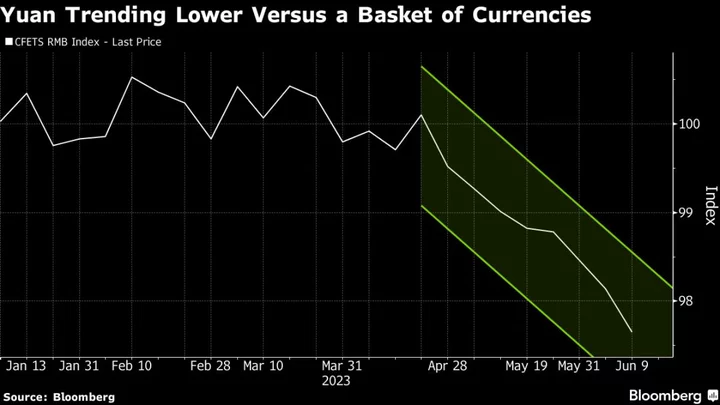China’s move to ramp up stimulus measures to boost its economy is providing little fillip for the yuan, while its proxy currencies climb up the regional leaderboard and look to extend gains.
The Korean won and Australian dollar, whose performance is closely linked to China due to strong export ties, are set to top the Asia-Pacific currency rankings this quarter. The won’s ascent is notable as it was the worst performer in the first three months of the year. China stimulus though may only being playing limited role in the two currencies’ outperformance.
“We are more circumspect that Chinese stimulus presents a major positive catalyst for the Australian dollar,” says John Bromhead, FX strategist at Australia & New Zealand Banking Group Ltd. in Sydney. “The current investment and stimulus mix is oriented toward boosting domestic consumption rather than large-scale infrastructure. Overall, this mix is less steel intensive and therefore less bullish for iron ore and the Australian dollar.”
Instead the won and Aussie have found other drivers. Bromhead credits a hawkish Reserve Bank of Australia, that unexpectedly raised rates this month, as the main catalyst for Aussie gains. “The market has moved expectations for the terminal RBA cash rate from 3.85% to 4.5% - a major tailwind for the Australian dollar.”
He sees the Aussie rising to 70 US cents by year-end after it rose nearly 3% this quarter to 68.85 as of 5:10 p.m Hong Kong time on Friday.
Tech Boom
Similarly, Nvidia Corp.’s “blow-out” forecast has helped buoy the won as foreign investors poured money into tech stocks in Asia, especially in South Korea and Taiwan. Global funds net purchased $4 billion of South Korean equities this quarter, and there maybe more inflows to come with some analysts still viewing Asian chipmakers as cheap despite the rally last month.
“The turnaround in the Korean won has been especially rapid driven by an uptick in inflows amidst an upturn in optimism around AI,” says Eddie Cheung, senior emerging markets strategist at Credit Agricole CIB Hong Kong Branch. “There are also reports of repatriation of dividends by Korean corporates which is adding to support for the won,” Cheung said, adding that he expects the currency to continue outperforming peers in the near term.
The won rallied 2.3% this quarter to 1,272.35, after losing 2.8% in the first three months of the year.
The yuan, however, remains weighed down by the nation’s underwhelming economic rebound. It came close to breaching the key 7.2 per dollar level last week as the nation’s monetary policy further diverged from the hawkish Federal Reserve following rate cuts.
The People’s Bank of China cut the rate on its one-year medium term lending facility by ten basis points on Thursday after a surprise reduction in seven-day reverse repurchase rate by a similar amount Tuesday. Investors will now be watching if the nation’s one and five-year loan prime rates are also reduced this week.
“For now, widening yield differentials in favor of US may still undermine yuan to some extent but if China support measures do gather further traction, then that may help to stabilize yuan sentiments,” says Christopher Wong, an FX strategist at Oversea-Chinese Banking Corp. in Singapore.
Here are the key Asian economic data due this week:
- Monday, June 19: New Zealand performance services index
- Tuesday, June 20: China 1-and 5-year loan prime rate, RBA minutes and RBA’s Kent and Bullock speak, New Zealand 2Q consumer confidence, Japan industrial production, Taiwan export orders, Malaysia trade balance
- Wednesday, June 21: Bank of Japan minutes to April meeting, BOJ’s Adachi speaks, South Korea PPI and 20-day exports/imports
- Thursday, June 22: Bank Indonesia rate decision, Bangko Sentral ng Pilipinas rate decision, New Zealand trade balance
- Friday, June 23: Japan CPI and PMI’s, Singapore CPI, Malaysia CPI
--With assistance from Chester Yung.

